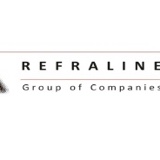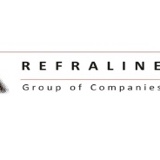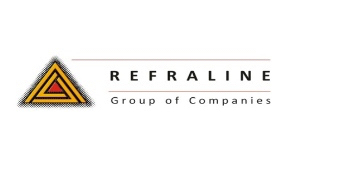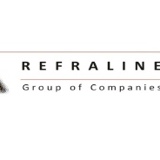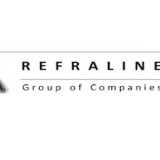Information
-
Audit Title
-
Document No.
-
Client / Site
-
Conducted on
-
Prepared by
-
Location
-
Personnel
General information:
-
Name of machine :
-
Model number:
-
Description of machine:
-
Where used
-
Name SHEQ professional conducting inspection:
-
Select date
Machine documentation:
-
User manual available?
-
EU certificate of conformity :
-
CE mark:
-
Standard operating procedure developed for machine ?
-
General comments:
1.) Machine Guarding
-
1.1 Are all pulleys and belts, chains, sprockets and other power transmission sources guarded?
-
1.2 Are operations that have rotating parts, pinch points, nip points, etc., guarded?
-
1.3 If the machine is designed for a fixed location is it securely anchored?
-
1.4 Are commonly used tools at hand so people are not encouraged to improvise, at risk of doing unsafe activities?
2.) Equipment Shutdown
-
2.1 Is there a single, lockable, clearly marked electrical power disconnect?
-
2.2 Are isolation valves for air, steam and other utilities accessible and marked?
-
2.3 Is there an adequate number of properly labeled manual reset emergency stops?
-
2.4 If equipment has pneumatic or hydraulic cylinders or motors, does the fluid power circuit have a solenoid block and bleed valves-interlocked to the emergency stop circuit?
-
2.5 Have employees who will perform repairs, maintenance and servicing operations been trained in the equipment specific lockout/tag out or chemical handling procedures before they have to perform these operations?
-
2.6 Have the equipment- specific procedures been put in writing and are they easily accessible?
4.) Electrical
-
4.1 Is all conduit, cable, and wire properly attached to all supports and tightly connected to junction and outlet boxes?
-
4.2 Is there evidence of fraying on electrical cords?
-
4.3 Are cords free of Greece, oil, and chemical?
-
4.4 Are cords used so they are not on pipes, nails, etc.?
-
4.5 Is all electrical equipment secured to a surface?
-
4.6 Are switches mounted in a clean, tightly closed metal box?
-
4.7 Do switches show signs of overheating?
-
4.8 Are switches easily accessible and the paths to them free of obstructions?
-
4.9 Are all unused openings in junction boxes plugged?
-
4.10 Are all controls properly labeled?
-
4.11 Do electrical push buttons have correct color coding? ( Only stop buttons should be red)
-
4.12 Have all employees who may be exposed to electrical voltage equal or greater than 50 volts been given electrical safety training?
-
4.13 Are all load center panel areas accessible and clear of obstructions?
6.) Personal Protective Equipment
-
6.1 Has a PPE assessment been completed for this equipment?
-
6.2 Has engineered solutions been investigated before the implementation of PPE?
-
6.3 Are there any special PPE requirements for the equipment or operations?
-
6.4 Has the appropriate PPE been provided to the employees?
-
6.5 Have employees been trained in the proper use/care of PPE?
7.)Ergonomics
-
7.1 Does the equipment require employees to manually handle raw materials or finished product?
-
7.2 If it does, have the ergonomic risk associated with those task been evaluated from a standpoint of weight, distance, frequency of task?
-
7.3 Are controls easy to reach and laid out in a manner that makes them easy to read and use for the equipment operator?
-
7.4 Does operation of equipment require employees to stand for extended periods of time?
-
7.5 If so are there mats?
-
7.6 Have operators been trained in the operation of the equipment, manufacturer's requirements for operating and maintaining, equipment safeguards, warning systems, etc.?
-
7.7 Are there sharp edges on the equipment that could cut the operator or others passing by the equipment?
-
7.8 Does operation of the equipment require the operator to engage in highly repetitive hand, wrist, arm, and finger movement or exertion?
-
7.9 Is frequent bending, twisting, and reaching required?
8.) Industrial Hygiene
-
8.1 If any chemical agents are required for the operation, servicing, or maintenance of the equipment, have MSDSs been obtained?
-
8.2 Have the employees been trained in the chemical hazards, exposures and required PPE?
-
8.3 Does the equipment emit any hazardous chemicals?
-
8.4 Are there excessive noise levels?
-
8.5 are there excessive temperatures or heat being put off?
-
8.6 Is there radiation or other physical hazards?
-
8.7 Have those hazards been evaluated?
-
8.8 Are there hot surfaces that require quarrying or labeling and if so has it been done?
-
8.9 Are appropriate warning labels provided on the equipment?
-
8.10 If ventilation systems are required on the equipment, are flow indicators provided and have the operators been trained in using and interpretation of them?
-
8.11 Are low-flow alarms installed on critical ventilation systems?
9.) emergency Procedures
-
9.1 Have employees been trained in emergency shut-Dow procedures?
-
9.2 Does the placement of the equipment present any evacuation hazards in the event of a serious equipment malfunction?
10.) Fire Hazards
-
10.1 Does the equipment present any inherent fire hazards such as open flames, flammable liquids, solid and gases, etc.?
-
10.2 are these hazards properly controlled by safeguards built into the equipment or provided outside, over and around the equipment?
-
10.3 Are fire extinguishers or other fixed extinguisher system required?
11.)Recomendations
-
suggestions:
-
inspector:
